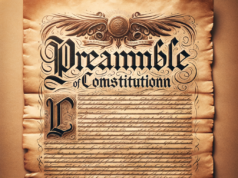Table of Contents
- 1 Understanding the Foundations of State and Federal Authority in the United States
- 2 Historical Context: Key Events Shaping State and Federal Power Dynamics
- 3 The Constitutional Framework: Powers Granted and Limitations Imposed
- 4 Contemporary Issues: Case Studies of State-Federal Tensions in Modern Governance
- 5 The Role of the Judiciary: Interpreting Authority and Resolving Conflicts
- 6 Future Implications: Navigating the Evolving Landscape of State and Federal Relations

The relationship between state and federal authority in the United States has long been a complex and often contentious dynamic. As the nation continues to evolve, the tension between these two levels of government remains a critical issue that shapes policy, governance, and the rights of citizens. This article seeks to unravel the intricacies of state and federal power, exploring the historical context, constitutional framework, contemporary issues, and the role of the judiciary in interpreting authority and resolving conflicts. Ultimately, it will consider the future implications of these evolving relationships in American governance.
Understanding the Foundations of State and Federal Authority in the United States
The United States operates under a federal system of governance, which divides power between the national government and the individual states. This framework is rooted in the belief that local governments are best suited to address the unique needs of their communities, while the federal government is responsible for national interests and broader issues that transcend state boundaries. The Constitution serves as the foundational document that outlines the powers allocated to each level of government, establishing a delicate balance intended to prevent the overreach of authority. However, this balance is often tested as states assert their rights against federal mandates, leading to a continuous negotiation of power dynamics.
Historical Context: Key Events Shaping State and Federal Power Dynamics
Throughout American history, several pivotal events have shaped the relationship between state and federal authority. The Civil War and the subsequent Reconstruction era marked a significant turning point, as the federal government sought to enforce civil rights and maintain order in the Southern states. The New Deal era in the 1930s further expanded federal power in response to the Great Depression, leading to an increase in federal programs and regulations. More recently, the Civil Rights Movement of the 1960s showcased the federal government’s role in enforcing equality, often in opposition to state laws that upheld segregation. Each of these historical moments has contributed to the ongoing evolution of state-federal relations, highlighting the tensions that arise when local and national interests collide.
The Constitutional Framework: Powers Granted and Limitations Imposed
The U.S. Constitution delineates the powers of both state and federal governments, establishing a framework that includes enumerated powers for the federal government and reserved powers for the states. The Tenth Amendment explicitly states that powers not delegated to the federal government are reserved for the states, reinforcing the principle of state sovereignty. However, the Supremacy Clause asserts that federal law takes precedence over state law in cases of conflict, creating a potential for tension when state laws diverge from federal mandates. This constitutional framework serves as both a guide and a battleground for disputes over authority, as states navigate the limits of their powers in relation to federal oversight.
Contemporary Issues: Case Studies of State-Federal Tensions in Modern Governance
In recent years, several contemporary issues have highlighted the ongoing tensions between state and federal authority. One notable example is the legalization of marijuana, where several states have enacted laws permitting its use despite federal prohibition. This has led to legal ambiguities and conflicts, as state-licensed businesses operate in defiance of federal law. Similarly, immigration policy has become a contentious battleground, with states like Arizona and California enacting laws that challenge federal immigration enforcement. These case studies illustrate the complexities of governance in a federal system, as states assert their rights while navigating the constraints imposed by federal authority.
The Role of the Judiciary: Interpreting Authority and Resolving Conflicts
The judiciary plays a crucial role in interpreting the Constitution and resolving conflicts between state and federal authority. Landmark Supreme Court cases, such as McCulloch v. Maryland and Gonzales v. Raich, have established important precedents regarding the balance of power. The courts serve as arbiters in disputes, often determining the extent to which states can exercise their powers in relation to federal law. As societal values and political landscapes shift, the judiciary’s interpretations continue to evolve, influencing the dynamics of state-federal relations. The role of the courts is thus pivotal in maintaining the delicate equilibrium of power and ensuring that both state and federal interests are adequately represented.
As the United States moves forward, the relationship between state and federal authority is likely to become even more complex. Issues such as climate change, healthcare, and technology regulation are increasingly prompting states to take independent action, often in direct opposition to federal policies. This trend raises important questions about the future of governance in a federal system, as states seek to assert their rights while navigating the constraints of federal authority. The ongoing evolution of this relationship will require careful consideration of the constitutional framework, historical context, and contemporary challenges, as policymakers and citizens alike strive to find a balance that respects both state sovereignty and national interests.
The tension between state and federal authority is a defining feature of American governance, rooted in historical context and constitutional principles. As contemporary issues continue to challenge the balance of power, the role of the judiciary remains critical in interpreting authority and resolving conflicts. Looking ahead, the evolving landscape of state-federal relations will require ongoing dialogue and negotiation, as the nation seeks to navigate the complexities of a federal system that is both dynamic and deeply entrenched in its foundational values. Understanding this intricate relationship is essential for fostering effective governance and ensuring that the rights of citizens are upheld in an ever-changing political environment.
























